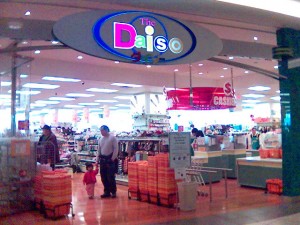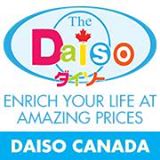This week I had the pleasure of conducting several interviews with Japanese students studying in Vancouver at UBC. Before the interviews I talked with a good friend, Sammie Hatch, to provide a well-versed outside perspective, as she is someone neither from Vancouver or Japan, but who has studied in both countries. Sammie is a second year theatre production and Japanese language student at UBC, and is originally from Oregon. She has studied Japanese language and culture for quite a while, and has participated in an exchange program in which she lived with a host family while studying in Japan. I asked her online what she thought of the difference between how Japanese culture is portrayed here and how it is in Japan. Below is her response:
“I definitely find that Japanese culture in a westernized environment is sort of viewed under a lens. Since there’s a concentration of Japanese culture in certain places (for example Daiso is characteristically Japanese) in Vancouver, people who have never been to Japan experience this lensed view of their culture. It’s very stereotypical and it’s often detrimental to the culture that’s being perceived. In Japan there really isn’t a diverse population, seeing a person who isn’t Japanese, more specifically white and black people from around the world, is really different from how we (in a heavily white society) would see a Japanese person. There’s also this very interesting thing where our culture is completely different from theirs. In most circumstances people will be ecstatic to talk to you and even more so if you can speak Japanese. In Canada (or the states) we tend to shy away from awkward conversations and we don’t want to learn. It is very rare to find a Canadian who will go out of their way to have a conversation with someone who’s language they are learning versus in Japan how everyone, young and old, typically take the opportunity to learn. Of course there are lots of exceptions but that was my experience in Japan.
I don’t think Vancouver based Japanese companies market any differently because we’re in a time when diversifying is pretty cool. Like I love buying legitimate Japanese clothes that have cute grammatically incorrect English on them because that’s what I want to see and I don’t feel like I’m alone in that aspect. I think as far as marketing goes, Japan stays very true to itself because it has always had a very unique gimmick so to speak, in which they try and out do themselves. I don’t think I’d go as far as saying they exaggerate their Asian-ness because comparatively watching commercials in Japan for say, Daiso, are essentially the same as here! Just in English. They have quirky cartoons and weird messages and it gets the point across to both western and their own audiences because that’s what they’ve come to expect from their market … basically we’re very different on a social aspect but markets really don’t change from here to there. I can’t speak for Japanese commercials here but I do believe they’ve remained constant from here to there.”
Given that helpful perspective, I went out to conduct interviews with Japanese-born students studying in Vancouver, to see how their thoughts lined up with Sammie’s, and with the other aspects I’ve been examining on this blog. My first actual interview was with Kanon Hewitt, a second-year anthropology student at UBC. Kanon is half-Japanese and grew up in Tokyo, where he lived for sixteen years. He has been studying at UBC for one year. Check out the transcript of the interview below:
Me: In your opinion, in what ways does Japanese culture differ here than in Japan?
Kanon: Well, there’s a huge emphasis on sushi here, which isn’t really that huge in Japan
Me: Very true! What is there an emphasis on in Japan in terms of cuisine?
Kanon: At least in Tokyo, there’s anything and everything from basically anywhere in the world. There isn’t really a particular emphasis on anything in particular, everything tastes good.
Me: Okay, what else?
Kanon: I feel like there’s a larger fixation on the Japanese pop culture in the West rather than the more historical or cultural aspects of Japan.
Me: Could you provide an example?
Kanon: An example would be, like, when white people find out I’m half-Japanese, they try to bond with me over anime (not every single person, but enough [people]).
Me: I see. Is there less of an obsession or focus with anime and other aspects of pop culture in Japan as opposed to here?
Kanon: Yeah, I mean it’s more commonplace, I guess. I feel like there’s almost a perception of Japan being ‘sushi and anime’. Like if someone were to think of France and be like ‘berets and baguettes’.
Me: So you feel as though Japanese culture is exaggerated and stereotyped here?
Kanon: Like, there’s a lot more to it, y’know? And I feel like people in Japan have, unsurprisingly, a better grasp of what Japanese culture is like. Exaggerated, no, but stereotypes, definitely.
Me: Regarding the Japanese consumer-market in Vancouver, do you feel as though Vancouver-based Japanese companies market differently than in Japan? Do they try to westernize their company, or else exaggerate its “Asian-ness”?
Kanon: What kind of companies do you mean? I haven’t really bought so much Japanese stuff here other than, like, condiments.
Me: Just general big-name companies that you’ve seen both in Tokyo and Vancouver, if there are any
Kanon: I haven’t really noticed any Western-ization, Other than, like, English labels?
Me: Okay great! Thank you so much for helping me out!
Kanon: No problem.
My next interview was with another Japanese-born student, Junna Hagiwara, who has lived in Vancouver for two years studying GRSJ (gender, race, sexuality, and social justice) at UBC. Below is Junna’s impressions of Vancouver’s Japanese culture, and how it varies from the culture in Japan:
Me: For my GRSJ class I’m examining the differences between the Japanese culture here and Japanese culture in Japan, particularly in the sense of consumerism and the market for Japanese products and services. Some of the things I’ve been looking at are companies like Daiso as well as the abundance of Japanese cuisine in Vancouver. In your opinion, how does Japanese culture differ here than in Japan?
Junna: Well one thing I noticed is that even though we have many Japanese restaurants and Japanese-run stores here in Vancouver, the service is quite different! Japanese staff/waitresses are trained to always have a smile on and say “Irasshaimase! (Welcome”) every time a new customer comes in, and apologizes so sincerely when we have to wait for seats to open. Basically the salesclerks have to have a super polite and welcoming manner in japan.
Me: How do things differ in terms of the actual cuisine and other types of markets aside from restaurants?
Junna: I guess the products (like sushi) are different and are made for more western tastes. Like we don’t have California rolls in Japan! Also in Japan we have convenience stores like 7 Eleven everywhere and it’s a super huge part of consumer life. Workers rush to the convenience stores in the morning/afternoon to get their lunch and maybe a newspaper, and it’s so easily accessible. It’s basically at every train station (we use trains all the time), and of course in the streets too. The stores seriously have everything. Like small rice balls, packed sandwiches/bread/lunches, desserts/snacks, magazines, drinks/alcohol, stationary, condoms, travel size bath utilities, and so much more for so cheap and good quality! Like you could get a bottle of tea (120 yen), and two rice balls (105 yen each) for like 330 yen (about CAD$3.60) and its usually open 24/7! All my Japanese friends miss it so much. Speaking of service, the Japanese stores generally are open till very late no matter what day of the week it is. Sorry for the long reply, did I answer your question?
Me: Absolutely! That’s really helpful, thanks! I didn’t know that there were so many differences in terms of service and cuisine. Last Question, I promise! Regarding the Japanese consumer-market in Vancouver, do you feel as though Vancouver-based Japanese companies market differently than in Japan? Like do they try to westernize their company, or else exaggerate its “Asian-ness”?
Junna: Yeah I think Japanese companies in Vancouver target not only Japanese but western / white people as well, so there are some stuff that you don’t really see in Japan. Especially when it comes to food. Because white people don’t necessarily have the same tastes, like including or not including wasabi or ginger in sushi. I feel like sometimes they do exaggerate or even make up Japanese-ish foods and atmosphere. For example there’s a place [in Vancouver] called Japa-Dog where they sell Japanese croquette and noodles placed in hotdog buns, but there is no such thing as Japa-Dogs in Japan. In the case of Daiso, I think all the products are imported from Japan. Usually the tags or the description on the Daiso products are Japanese (even in Vancouver) so I don’t think they’re selling anything that’s from here. But in japan all the products are 100 yen($1) whereas here it’s $2.
Me: Ok awesome, thanks for your help!
Junna: No problem! Good luck!
These interviews helped draw some interesting conclusions as to the authenticity of Vancouver’s Japanese culture. It was interesting that everyone seemed to agree that the Western view of Japanese people in Vancouver was very limited and heightened or stereotyped aspects of the culture. It was also interesting to see that there are a variety of differences in terms of Japanese services and cuisine, yet big-name Japanese companies such as Daiso stay true to their Japanese origins, at least in terms of their products. At the same time, it’s certainly worth noting that while Kanon and Sammie didn’t believe, as Junna did, that Japanese marketing is different here than in Japan, everyone agreed that there is a strong Western view to how Japanese culture in terms of a consumerist aspect is regarded.
Until next week,
Leah



